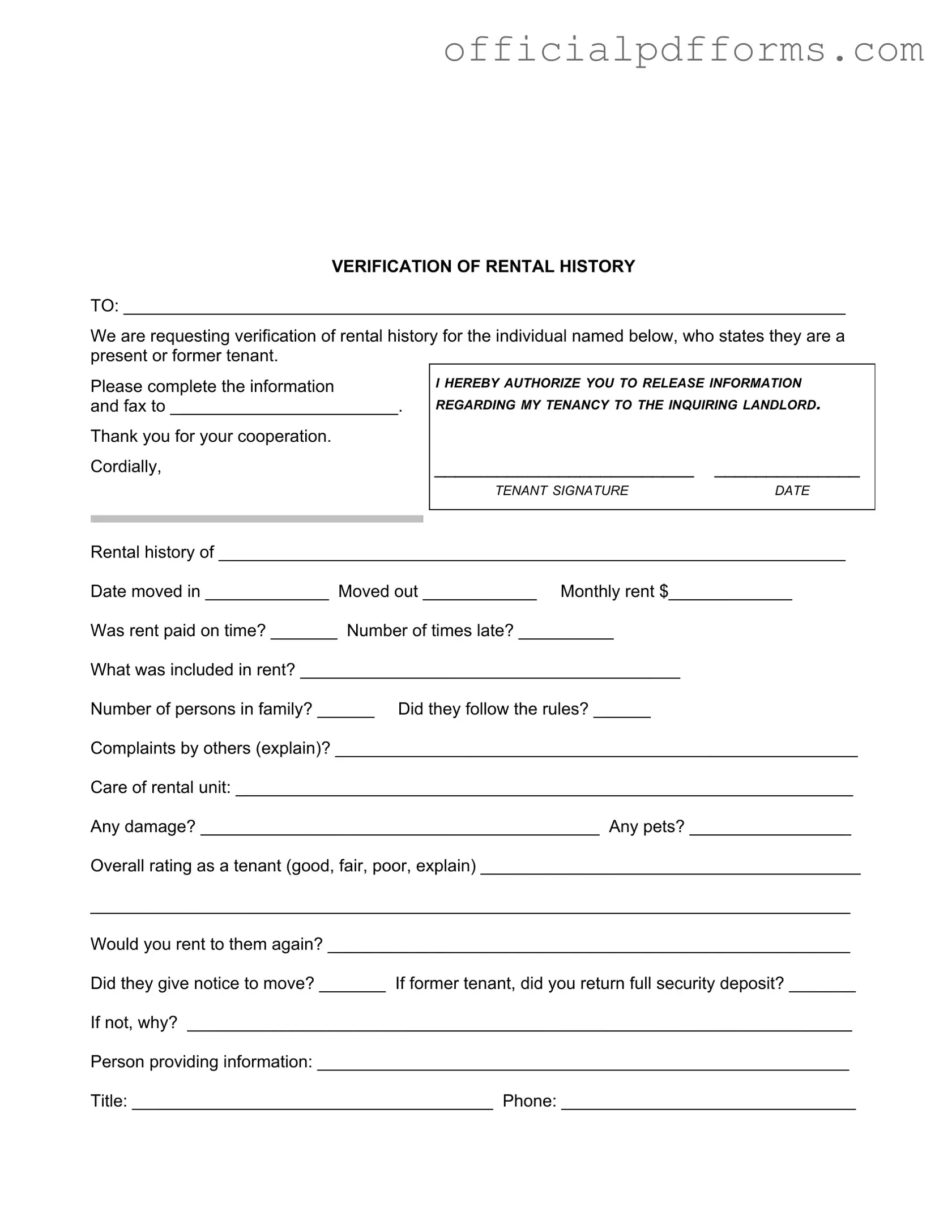Fill in a Valid Verification Rental Form
The Verification Rental form is a crucial document used by landlords to gather essential information about a prospective tenant's rental history. This form requests verification from previous landlords regarding a tenant's reliability, payment history, and overall conduct during their tenancy. Understanding the importance of this form can help both landlords and tenants navigate the rental process more effectively.
Ready to streamline your rental application? Fill out the form by clicking the button below.
Access Form Online
